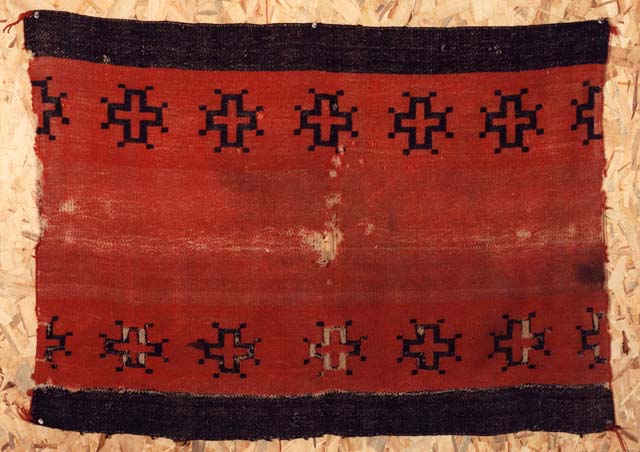The Durango Collection®
Navajo Classic: 1750-1875
| Next item | Last item |

|
The Navajo began weaving about 300 years ago, taught by Spider Woman, with tools of sunshine, lightening and rain. Navajo textiles, strongly symmetrical in their design and exact in their execution, reflect the Diné (the Navajo name for "the People") concept of harmony, which brings with it beauty and a sense of well-being.
The earliest Navajo textiles are known only through accounts of the Spanish. They mention banded brown and blue dresses, like the two-piece dress in the Durango Collection®. This dress dates to 1750 and is the earliest intact Navajo dress known to exist. Navajo weaving has been classified by scholars and aficionados into three periods. These are: The Classic Period, from 1700-1875, where the Navajo primarily produced clothing for their own use; The Transitional Period, from 1875-1900, when - after the Navajo's forced exile at Bosque Redondo they found their herds scattered and resources depleted - they began experimenting with new materials and designs; and The Rug Period through contemporary times, when Navajo weaving reached a worldwide market. |
